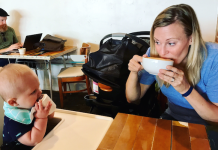 Meal planning without strict meal planning involves creating a flexible system that allows you to eat healthy, use up ingredients, and avoid wasting food. As a personal chef who meal preps for clients, this is how I would approach it:
Meal planning without strict meal planning involves creating a flexible system that allows you to eat healthy, use up ingredients, and avoid wasting food. As a personal chef who meal preps for clients, this is how I would approach it:
1. Stock your pantry and fridge with basics. Keep a well-stocked pantry with versatile ingredients like grains (rice, quinoa, pasta), canned goods (beans, tomatoes), frozen vegetables, and proteins (chicken, tofu, eggs). Fresh fruits and veggies can be added based on your preferences. Think components of family favorites that can be turned into a meal with a moment’s notice.
2. Keep a list of favorite meals. Jot down a few simple go-to meals that you enjoy making and eating. These might include stir-fries, pasta dishes, salads, or grain bowls. This list can serve as a guide when you’re unsure what to make as you can just select from the list.
READ: Meal-Planning Tips From a Personal Chef
3. Use what you have. When it’s time to cook, shop your own kitchen first. Take time to really check what you already may have in your kitchen. Build meals around these ingredients to reduce food waste. For example, if you have leftover rice, you can make fried rice or add it to a soup.
4. Prepare ingredients, not recipes. Instead of planning specific meals for each day, prepare some ingredients in bulk — like roasting vegetables, cooking grains, or grilling chicken. These can be mixed and matched throughout the week in different combinations. Ingredient prep can be more manageable and realistic as it helps cut back on actual cooking time during the busy week, but it allows for variety that sometimes traditional meal prep doesn’t. I love this option for quick lunches.
READ: Escape the What’s for Dinner Rut: 4 Weeks of Meal Plans DONE!
5. Keep things simple. Focus on easy meals that don’t require detailed recipes. For example, a protein (chicken or beans), a grain (rice or quinoa), and some vegetables can form the basis of many meals with slight variations (seasoning, sauces, or toppings). Get a copy of I Dream of Dinner (so You Don’t Have To) by Ali Slagle. This cookbook features low-effort recipes that can be made quickly but taste like you have been in the kitchen for hours.
6. Repurpose leftovers. Use leftovers for lunches or dinners. For example, roast extra veggies to add to a salad, or use leftover meat in wraps or stir-fries.
7. Batch cooking for flexibility. Cook large portions of versatile meals like soups, stews, or casseroles that can be eaten for several days or frozen for future use.
By keeping your meals adaptable and ingredient-driven, you reduce the need for rigid meal plans while still ensuring variety and nutrition. Check out an already done-for-you meal plan of seven recipes here. Please note that name and email is required to access the meal plan via this app.

















